Ravelry hosts an impressive collection of patterns – more than 362,000 for knitting and 235,000 for crochet. This vast selection often leaves beginners wondering which craft to pick up first.
Both skills take less than an hour to learn the basics, but they’re quite different in practice.
Knitting creates stretchy, interlocking loops that work great for sweaters and socks. Crochet, with its sturdy, knot-like stitches, excels at making structured items like baskets and coasters.
These crafts shine in different ways. Knitting saves about 25-30% yarn, which helps your budget, but needs more finger coordination.
Crochet keeps things simple with just one hook and proves easier for people with arthritis.
Let us help you understand these differences to find the craft that fits you best.
Whether you love knitting’s versatility or crochet’s straightforward approach, we’ll direct you to the perfect starting point for your creative pursuits.
Key Differences Between Knitting and Crocheting
The basic tools make knitting and crocheting unique crafts. At the time we start exploring them, we’ll see how each craft creates fabric in its own way.
Knitting requires two needles to create fabric. These needles come in several types:
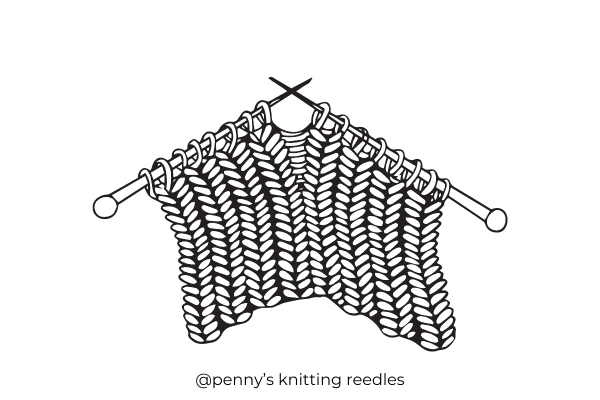
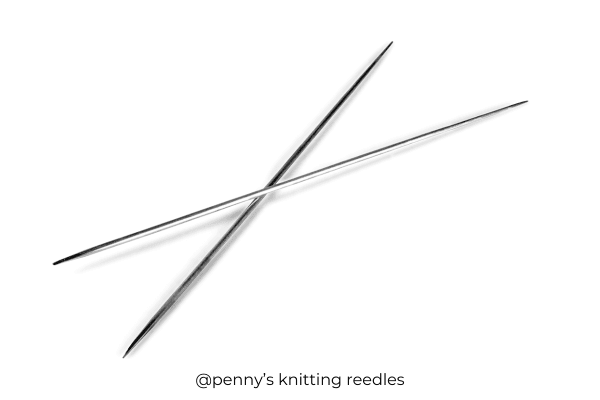
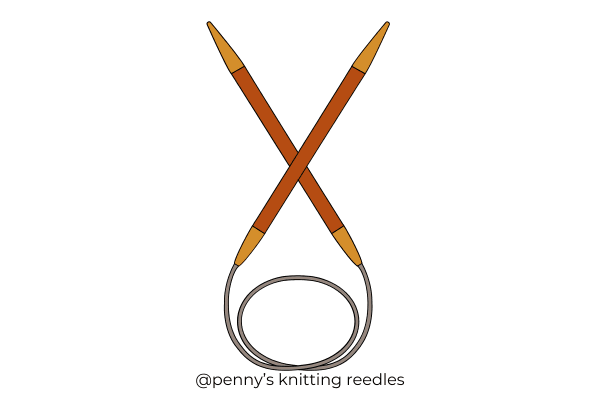
- Straight needles for flat projects
- Circular needles for smooth tubes
- Double-pointed needles for small circular projects
Knitting needles range from 1.5mm to 35mm in diameter and work well for different project types.
Circular needles have become popular since their original US patent in 1918. They help distribute weight evenly and put less strain on your wrists.
Crocheting needs just one hook, which makes it easier to carry around. You’ll find two main styles of crochet hooks:
- Inline hooks with pointy heads
- Tapered hooks with rounded heads
The price difference between these tools stands out. A quality set of interchangeable knitting needles costs upwards of 100 USD, while crochet hooks tend to be cheaper.
Crochet hooks range from 0.35mm to 25mm in diameter.
Steel hooks work best for delicate projects, while aluminum, bamboo, or plastic hooks suit larger sizes.
| Tool Aspect | Knitting | Crocheting |
| Number of Tools | Multiple needles | Single hook |
| Size Range | 1.5-35mm | 0.35-25mm |
| Material Options | Metal, wood, plastic | Steel, aluminum, bamboo |
Techniques:
The main difference between these crafts is in fabric creation. In fact, knowing how each technique works helps you pick the right craft for your projects.
Knitting works with multiple active loops at the same time. These loops stay on your needles while you work with them to create fabric. The process includes:
- Moving stitches between needles
- Making new loops through existing ones
- Keeping tension even across multiple live stitches
The knitted fabric shows a distinctive V-shaped pattern and stretches really well. You can create fabric that moves and drapes beautifully, which makes it perfect for garments.
Crocheting takes a different path. You work with just one active loop at a time and pull new loops through previous stitches with your hook.
Each stitch needs to be finished before you move to the next one, which creates a more stable fabric structure.
| Aspect | Knitting | Crocheting |
| Active Loops | Multiple | Single |
| Stitch Creation | Interlocking loops | Pull-through method |
| Fabric Structure | V-shaped, stretchy | Dense, stable |
| Working Style | Row by row | Stitch by stitch |
The crocheted fabric becomes thicker and more rigid than knitted fabric. This quality makes it ideal for creating structured items like baskets, toys, and decorative pieces.
Project Outcomes:
The unique characteristics of finished projects can guide your choice between knitting and crocheting. This knowledge helps crafters make better decisions about their projects.
Knitted projects stand out in these ways:

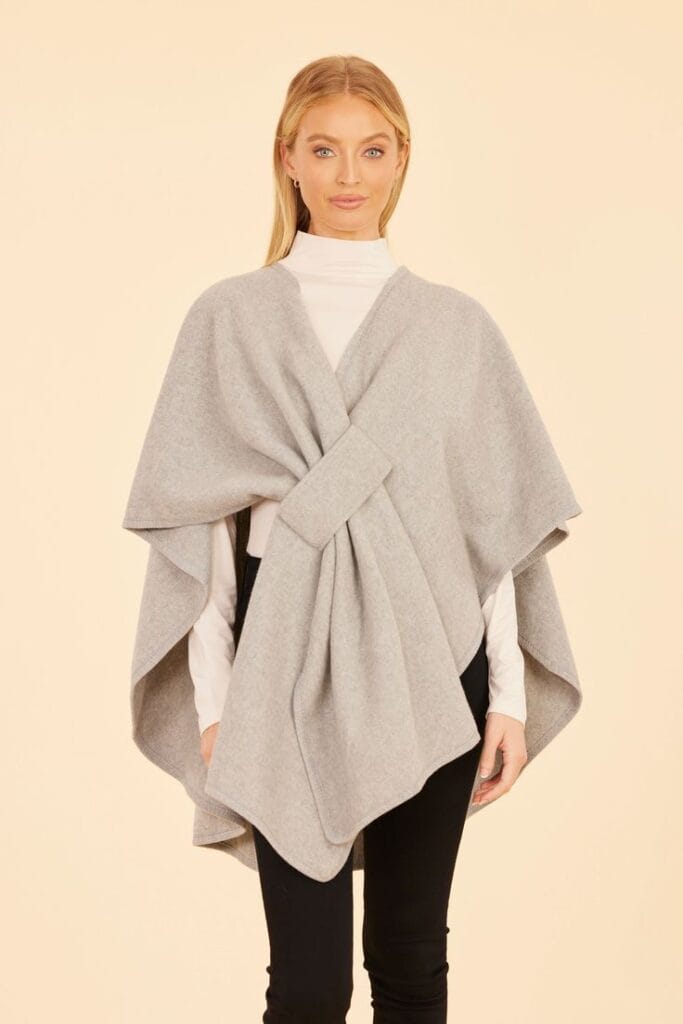
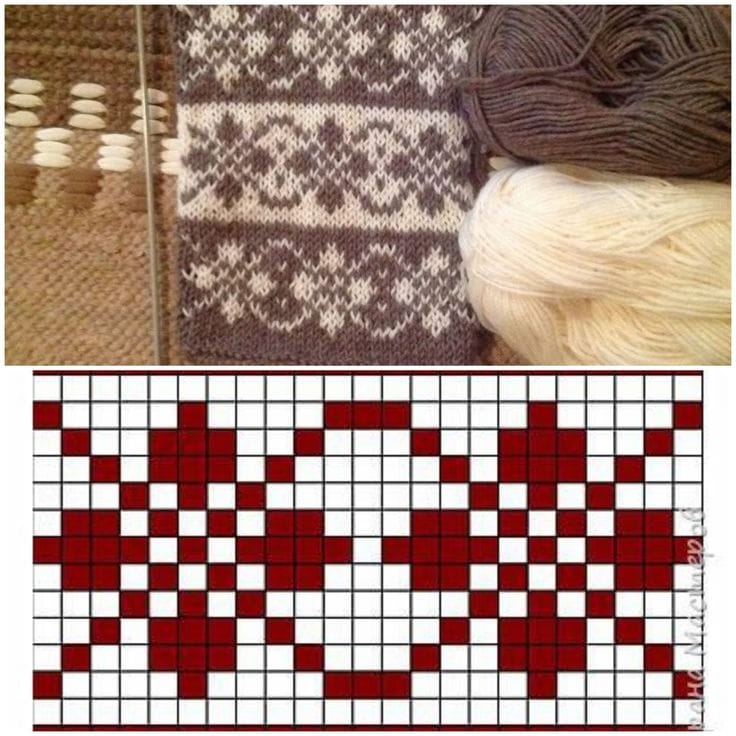
- Creating lightweight, drapey garments like sweaters and shawls
- Producing elastic ribbing for socks and cuffs
- Developing intricate colorwork patterns
- Making uninterrupted items with minimal joining
Crochet items showcase their special strengths. They excel at creating structured pieces with excellent stitch definition. These qualities make them ideal for:
- Three-dimensional items like amigurumi toys
- Sturdy home décor items
- Textured blankets and afghans
- Decorative lace patterns
| Project Type | Knitting Characteristics | Crochet Characteristics |
| Garments | Fluid drape, stretchy | Structured, less stretch |
| Accessories | Fine, delicate details | Bold, textured patterns |
| Home Items | Smooth, uniform surface | Sturdy, dimensional texture |
| Toys | Flat, seamless pieces | Sculptural, 3D shapes |
Beginners tend to start with crochet projects like dishcloths or scarves because they finish quickly. Both crafts offer amazing creative possibilities, and your project goals matter more than the technique you choose.
Knitting: Great for garments, blankets, and detailed textures.
Knitting really shows its strength in creating garments that need a precise fit and excellent drape. The nature of knitted fabric lets us create pieces that mold perfectly to body shapes.
Our experience shows knitting stands out in these areas:
- Making smooth garments with minimal joining
- Creating intricate cable patterns and textures
- Crafting stretchy, form-fitting pieces
- Producing lightweight, breathable fabrics
Blankets showcase knitting’s unique advantages. The fabric’s natural stretch helps maintain shape over time because of the interlocking knitted stitches.
These qualities make knitted blankets perfect for everyday use and family heirlooms.
| Project Type | Unique Knitting Features |
| Sweaters | Smooth construction, ribbed edges |
| Blankets | Even tension, reversible patterns |
| Scarves | Intricate cables, delicate lace |
| Socks | Elastic ribbing, heel shaping |
Knitting’s magic comes from knowing how to create detailed textures.
Classic cables and intricate lace patterns give endless possibilities for surface design.
This versatility ended up making it a perfect choice for crafters who love creating both functional and decorative pieces.
Crocheting: Ideal for quick projects, amigurumi, and lacework.
Crochet enthusiasts love how quickly they can finish their projects.
Single-hook techniques help crafters create finished pieces faster than other methods, particularly with smaller items.
Crochet shows its strength in three main areas:
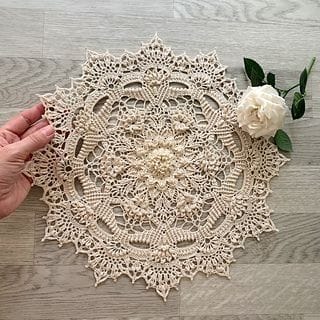
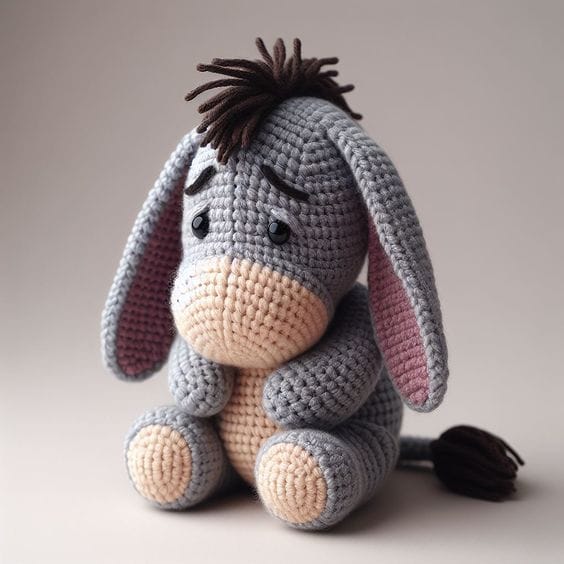

- Quick-finish projects like dishcloths and coasters
- Amigurumi (3D stuffed toys and figures)
- Intricate lacework patterns and doilies
Amigurumi’s unique charm sets crochet apart from other fiber crafts. This Japanese-inspired technique lets crafters create adorable stuffed animals and characters using simple crochet stitches.
Crochet stitches’ stable and structured nature makes them perfect for three-dimensional objects that maintain their shape.
| Project Type | Completion Time | Skill Level |
| Simple Dishcloth | 1-2 hours | Beginner |
| Basic Amigurumi | 3-4 hours | Intermediate |
| Lace Doily | 5-8 hours | Advanced |
Crocheted lacework creates beautiful, openwork patterns. These pieces tend to be more substantial and structured than knitted lace, which makes them ideal for decorative items like table runners and wall hangings.
Knowing how to work quickly and control stitches precisely makes crochet an excellent choice for crafters who want to see their projects take shape rapidly.
Pros and Cons of Knitting
Pros
Knitting offers incredible benefits for both beginners and experts alike. Here’s why it stands out:
Therapeutic Benefits
- Reduces stress, anxiety, and harmful cortisol levels.
- Lowers heart rate and blood pressure, promoting relaxation.
Cognitive and Physical Advantages
- Boosts memory retention and cognitive function.
- Enhances hand-eye coordination and fine motor skills.
Fabric Quality
- Creates lightweight, breathable, and stretchy materials.
- Offers natural elasticity and excellent drape, perfect for fitted garments.
Creative Possibilities
- Wide variety of patterns, from simple textures to intricate designs.
- Allows endless customization with stitch combinations, cables, lace, and color work.
Tools and Accessibility
- Interchangeable needles adapt to different projects, saving money long-term.
- Modern tools are ergonomic and beginner-friendly, with options for all crafting needs.
With patience and practice, knitting becomes a rewarding skill that combines creativity with therapeutic benefits, producing professional-quality garments and accessories.
Cons:
Knitting is rewarding, but it comes with challenges—especially for beginners. Here’s what to keep in mind:
Steeper Learning Curve
- Time Investment: Learning basic stitches and controlling tension can take weeks.
- Coordination: Managing two needles and live stitches requires practice.
- Pattern Reading: Understanding specialized terminology takes time and effort.
Mistakes and Fixing Errors
- Dropped Stitches: A single error can unravel rows of work.
- Tension Issues: Maintaining consistency across stitches is challenging.
- Pattern Disruptions: Fixing errors in complex designs can require backtracking.
Practical Challenges
- Time-Intensive Projects: Knitting takes longer to complete compared to other crafts.
- Tool Management: Working with multiple needles can feel cumbersome.
- Cost: Quality tools and yarn often require a higher upfront investment.
Pros and Cons of Crocheting: A Balanced Look
Crocheting offers unique advantages and some clear limitations compared to knitting. Here’s a quick overview:
Pros of Crocheting
1. Beginner-Friendly
- Easier learning curve with simple stitch progression.
- The single-hook technique simplifies tool management.
2. Quick Project Completion
- Ideal for small, fast projects like dishcloths and coasters.
- Faster results compared to knitting for comparable projects.
3. Lower Investment Costs
- Requires just one hook, making it budget-friendly for beginners.
- Fewer tools mean less storage and easier portability.
4. Excellent for 3D Shapes
- Perfect for dimensional projects like amigurumi, bags, and decorative items.
- Greater stitch control allows for more sculptural designs.
5. Therapeutic Benefits
- Relaxing and stress-reducing, with repetitive motions improving well-being.
Cons of Crocheting
1. Fabric Limitations
- Less natural stretch and drape compared to knitting.
- Thicker, stiffer fabrics make fitted garments challenging.
2. Higher Yarn Usage
- Typically uses 20–30% more yarn than knitting, increasing project costs.
3. Bulkier Seams
- Crochet seams are less subtle, which may affect garment aesthetics.
4. Limited Pattern Diversity
- Fewer options for intricate textures, lacework, or subtle designs compared to knitting.
- Bold, structured patterns are more common than delicate ones.
5. Yarn Cost Considerations
- Larger yarn requirements impact cost, especially for big projects like blankets.
Which One Is Right for You? Crochet Vs Knitting
The choice between knitting and crochet depends on your priorities and what works best for you.
Our teaching experience has helped us develop a simple way to guide you through this decision.
Time and project goals should be your first focus.
Crochet projects finish 30% faster than knitting. This makes crochet perfect if you want quick results.
Knitting uses about one-third less yarn, which saves money on bigger projects.
| Factor | Choose Crochet If You… | Choose Knitting If You… |
| Time | Want quick projects | Enjoy detailed work |
| Projects | Love amigurumi & decor | Prefer fitted garments |
| Budget | Need minimal tools | Can invest in supplies |
| Learning | Prefer simpler techniques | Enjoy technical challenges |
Your crafting space plays a big role, too. Here’s everything you need to think over:
- Storage space for tools and supplies
- Budget for original materials
- Time available to learn
- Physical comfort with tools
Most crafters learn both techniques over time. Crochet gives you a head start since you can pick up simple stitches within hours. Knitting takes more practice sessions but rewards your patience with versatile fabric options.
We suggest you try small starter projects in both crafts. This hands-on experience will show you which craft best matches your style and goals.
Consider Your Goals:
We’ve helped many beginners start their crafting trip, leading us to develop a practical framework that matches personal goals with the right fiber art.
Here are the key factors we ask people to think over:
- Project completion timeline priorities
- Desired end-product characteristics
- Physical comfort with different tools
- Available practice time commitment
This decision framework will help you make your choice:
| If Your Goal Is… | Consider… | Best Choice |
| Quick Results | Pattern Variety | Crochet |
| Fitted Garments | Fabric properties | Knitting |
| Budget-Friendly Start | Tool investment | Crochet |
| Detailed Patterns | Pattern variety | Knitting |
Success in choosing the right craft depends on honest self-assessment. Our students picture their ideal crafting session – some love the meditative rhythm of knitting needles, while others enjoy completing crochet motifs quickly.
Your learning style plays a significant role in this decision. Visual learners excel with crochet’s clear stitch architecture. Methodical learners might appreciate knitting’s systematic approach.
Both crafts are great creative outlets. When you align your choice with personal goals and learning priorities, you’ll create an enjoyable crafting experience that fits your aspirations and lifestyle.
Garments vs. accessories.
The choice between knitting and crochet becomes clearer as we get into specific project types. Our years of teaching have shown us what works best for different garments and accessories.
We learned these key points about garment construction:
- Fitted clothing (sweaters, dresses)
- Knitting offers superior drape and stretch
- Crochet provides structured silhouettes
- Casual wear (shawls, ponchos)
- Both techniques excel equally
- The choice depends on the desired texture
| Project Type | Best Technique | Time Investment |
| Fitted Sweaters | Knitting | 20-30 hours |
| Casual Tops | Either | 15-25 hours |
| Scarves/Shawls | Either | 8-12 hours |
| Hats/Mittens | Personal preference | 4-6 hours |
Both crafts make accessories with fewer technical challenges. Small items like hats, scarves, and mittens work great with either technique and make perfect starter projects.
Students who want to focus on garment making usually pick knitting because it creates a fabric that moves naturally with the body. People who love making accessories or home items often choose crochet. They love its quick results and sturdy construction.
Time commitment for projects.
Project timeline knowledge helps crafters make realistic commitments. Our years of teaching have given us deep insights into how long different projects typically take.
The time needed depends on several factors:
- Crafter’s skill level and practice
- Project complexity and size
- Available crafting time per session
- Choice of yarn weight and hook/needle size
| Project Type | Beginner Time | Experienced Time |
| Basic Scarf | 8-10 hours | 4-6 hours |
| Simple Hat | 6-8 hours | 2-3 hours |
| Baby Blanket | 25-30 hours | 15-20 hours |
| Adult Sweater | 40-50 hours | 20-30 hours |
Most beginners cut their project completion time in half after finishing 3-4 projects. Our experience shows that regular practice guides crafters to visible improvements within their first month.
Beginners who crochet finish projects faster than those who knit. They work with one active stitch and fix mistakes more easily. The speed gap between these crafts becomes nowhere near as noticeable as skills improve.
Skill Level:
We’ve found distinct patterns in how people learn knitting and crochet over our ten years of teaching both crafts.
These crafts show different learning curves for beginners:
- Basic Skills Mastery
- First crochet project: 2-3 hours
- First knitting project: 4-6 hours
- Pattern reading: 1-2 weeks for either craft
- Tension control: 2-3 projects
| Skill Aspect | Crochet Learning | Knitting Learning |
| Basic Stitch | 30 minutes | 90 minutes |
| Tool Control | Simple (1 hook) | Complex (2 needles) |
| Mistake Fixing | Straightforward | More challenging |
| Advanced Techniques | 3-4 months | 4-6 months |
Crochet provides a gentler starting point for most beginners. New crafters can focus better on stitch formation with the simple one-hook technique, and they don’t have to juggle multiple tools.
Each craft needs its type of dexterity. Knitting requires more finger coordination at first, but it leads to better fabric control once you’re skilled at it. This control is a great way to get better results in complex projects.
Which craft is easier for beginners to pick up?
Our years of teaching fiber arts to beginners have shown clear patterns in how new crafters approach these skills.
Crochet proves to be an easier starting point for most beginners. New crocheters can learn simple stitches in 2-3 hours, but knitting takes 4-6 hours of practice to get the basics down.
Let’s look at these learning milestones for complete beginners:
- First successful row completion
- Crochet: 15-20 minutes
- Knitting: 30-45 minutes
- Basic project completion
- Crochet: Simple dishcloth in 2 hours
- Knitting: Basic scarf in 4-5 hours
| Learning Aspect | Crochet | Knitting |
| Tool Management | Single hook | Two needles |
| Stitch Visibility | Clear, defined | More subtle |
| Mistake Recovery | Quick fixes | Complex corrections |
| Original Success | Faster results | Gradual progress |
Your learning style and patience level will guide your choice.
Visual learners click better with crochet’s clear architecture because each stitch stands alone. Methodical learners might prefer knitting’s systematic approach, even with its steeper learning curve.
Both crafts become manageable with steady practice. Students who practice 30 minutes daily master the simple techniques within two weeks, whatever craft they pick up.
Tools and Materials:
The first step in our fiber arts trip involves selecting the right tools and materials. Quality, simple tools that won’t empty your wallet make the best starting point for new crafters.
Your yarn choice impacts project success more than your tools. We suggest:
- Medium-weight acrylic yarn for practice
- Light-colored yarn for stitch visibility
- Smooth texture for easier manipulation
- Standard brand yarns for consistent results
| Basic Starter Kit | Knitting Cost | Crochet Cost |
| Essential Tools | $15-25 | $8-12 |
| Practice Yarn | $5-8 | $5-8 |
| Stitch Markers | $3-5 | $3-5 |
| Pattern Book | $12-15 | $12-15 |
Tool quality becomes more important as your skills improve. Bamboo or wooden needles work best for beginners who are knitting because they grip stitches better than metal ones. Similarly, aluminum crochet hooks give new crocheters the perfect balance of grip and glide.
Yarn weight influences both tool size and project outcome. Our students achieve the best results with worsted weight (size 4) yarn paired with US size 8 knitting needles or an H/8 (5mm) crochet hook. This combination helps beginners maintain proper tension and creates well-defined stitches.
Availability of supplies and initial investment.
Local craft stores and online marketplaces have made knitting and crochet supplies accessible to more people. Our research reveals significant price differences between various shopping channels.
These supply sources have proven reliable:
- Local craft stores for hands-on selection
- Online marketplaces for competitive pricing
- Specialty yarn shops for premium materials
- Big-box retailers for simple supplies
| Investment Category | Knitting | Crochet |
| Basic Tool Set | $20-30 | $10-15 |
| Starter Yarn Pack | $15-20 | $15-20 |
| Pattern Books | $15-25 | $15-25 |
| Total Startup | $50-75 | $40-60 |
Both crafts let you start at your budget level. Our teaching experience shows that crochet needs a smaller original investment because it uses fewer tools.
Yarn quality makes the same difference in both crafts. Mid-range materials give you the best balance of cost and quality. Many crafters invest in premium tools and materials as their skills grow, but this step remains optional for both hobbies.
Free patterns and online tutorials help reduce the original costs, making both crafts available to beginners whatever their budget.
Personal Preference:
Teaching thousands of students has shown us that personal style and esthetic priorities are vital in craft selection, not just technical aspects.
We noticed visual priorities guide craft choice:
- Knitted fabrics offer smooth, uniform appearances
- Crocheted pieces feature bold, textured surfaces
- Stitch definition varies between techniques
- Project esthetics look substantially different
| Esthetic Element | Knitting Appeal | Crochet Appeal |
| Fabric Look | Sleek, flowing | Textured, structured |
| Stitch Definition | Subtle, refined | Bold, pronounced |
| Project Style | Classic, timeless | Modern, versatile |
| Visual Impact | Understated | Statement-making |
Physical comfort with different tools shapes our crafting experience naturally. Some students find the rhythmic motion of two knitting needles soothing, which creates a meditative flow. Others enjoy the focused precision of working with a single crochet hook.
Learning styles shape craft priorities. Visual learners often connect with crochet’s clear stitch architecture. Analytical thinkers might appreciate knitting’s systematic approach. Right-handed crafters typically adapt quickly to either technique. Left-handed beginners often find crochet more user-friendly, based on our teaching sessions.
Your esthetic goals matter most when choosing between knitting and crochet. Consider whether you prefer garments with fluid drape or structured pieces with bold texture. Your answer points you toward the craft that brings the most satisfaction.
Do you prefer the look of knitted or crocheted items?
Teaching fiber arts has shown us that crafters often pick between knitting and crocheting based on what catches their eye.
Our years of unmatched experience reveal clear visual differences that draw people to each craft.
The visual character of each technique creates its unique fabric personality:
- Knitted items feature:
- Smooth, even stitches
- Flowing drape
- Subtle texture variations
- Refined finish
- Crocheted pieces showcase:
- Bold stitch definition
- Dimensional textures
- Structured silhouettes
- Distinctive patterns
| Visual Element | Knitted Look | Crocheted Look |
| Fabric Surface | Uniform, flat | Textured, raised |
| Stitch Appearance | Subtle, blended | Bold, defined |
| Edge Finish | Clean, straight | Decorative, detailed |
| Overall Effect | Classic, refined | Modern, artistic |
Students who love minimalist design naturally drift toward knitting’s clean lines and subtle textures. The bold, artistic expressions of crochet tend to attract those with a more dramatic flair.
Style goes beyond just looks when choosing a craft. We help our students determine how each technique’s visual features arrange with their clothing and home décor choices.
This integrated approach ensures they’ll love their chosen craft for years.
Comparison Table
| Aspect | Knitting | Crocheting |
| Simple Tools Required | Multiple needles (straight, circular, double-pointed) | Single hook |
| Tool Size Range | 1.5mm – 35mm | 0.35mm – 25mm |
| Original Tool Cost | $25-30 for starter kit | $8-12 for starter kit |
| Learning Time | 4-6 hours to learn fundamentals | 2-3 hours to learn fundamentals |
| Yarn Usage | Uses 25-30% less yarn | Uses more yarn than knitting |
| Fabric Properties | Stretchy, fluid drape, lightweight | Sturdy, structured, thicker |
| Project Speed | Slower completion time | 30% faster completion |
| Best Project Types | Garments, sweaters, socks, fitted items | Amigurumi, baskets, quick projects |
| Pattern Variety | Extensive variety, intricate textures | Limited range, bold geometric patterns |
| Mistake Correction | More challenging to fix errors | Easier to fix mistakes |
| Beginner Friendliness | Steeper learning curve | Easier to learn simple stitches |
| Fabric Stretch | Excellent elasticity | Limited stretch |
Can You Do Both?
Years of teaching have shown us that knitting and crochet each provide a unique gateway to fiber arts. These crafts attract different creative personalities, and with good reason, too.
Knitting creates elegant, stretchy fabrics that perfectly fit garments and classic accessories. The craft requires more original patience, but working with two needles gives crafters exceptional fabric drape and versatility.
Many students who love methodical processes and detailed work naturally connect with knitting.
A single hook makes crochet appealing to beginners, and projects finish quickly. This craft stands out when creating three-dimensional items, durable home goods, and bold textured pieces.
Creative minds wanting quick results tend to embrace crochet’s straightforward nature.
Your success in either craft depends on how well you match your goals with each technique’s strengths. Both knitting’s refined elegance and crochet’s bold creativity lead to rewarding creative expression.
Small starter projects in both crafts will help your natural priorities guide your choice.
Why do many crafters eventually learn both?
Our fiber arts studio has noticed something interesting: dedicated crafters tend to learn both knitting and crochet.
This combination of skills creates amazing creative possibilities beyond what either craft can offer alone.
We see these benefits when crafters combine both skills:
- Better project versatility
- Broader design possibilities
- Improved problem-solving abilities
- Deeper understanding of fiber properties
| Skill Transfer | Benefit to Crafting |
| Tension Control | Consistent fabric quality |
| Pattern Reading | Better project planning |
| Yarn Knowledge | Smarter material choices |
| Tool Mastery | Increased efficiency |
Each craft builds different strengths in fiber artistry. Students who become skilled at both techniques create innovative projects that mix knitted and crocheted elements.
They add crocheted borders to knitted shawls and incorporate knitted panels into crocheted bags.
Learning both crafts helps push creative limits further. We’ve watched beginners start with simple crochet chains and basic knitting.
They naturally blend both techniques into advanced projects later. This progression builds confidence and technical skills together.
The experience of mastering knitting and crochet makes our fiber arts practice richer. This combined approach helps us better understand yarn behavior, stitch construction, and fabric properties.
These skills improve our overall crafting abilities significantly.
How knitting and crocheting complement each other.
Our experience as fiber artists has shown that knitting and crocheting together open up amazing design possibilities. We teach these crafts and see how they boost each other in special ways.
We found that these techniques work together perfectly through:
- Edging flexibility (crochet borders on knit pieces)
- Structural integrity (knit bodies with crochet reinforcements)
- Design versatility (mixed-technique accessories)
- Skill enhancement (improved tension control)
| Combined Project | Knitting Role | Crochet Role |
| Sweaters | Main body fabric | Decorative edges |
| Blankets | Center panels | Border details |
| Accessories | Base structure | Embellishments |
| Home Decor | Background texture | Surface designs |
Being skilled in both crafts gives us more creative options. We use knitting’s excellent drape for the main body of sweaters and add crochet’s structured edges for beautiful finishing touches.
This approach creates professional-looking garments that highlight the best features of both techniques.
Our advanced students have found a deeper appreciation for fiber arts after learning both crafts.
Understanding stitch construction in one technique helps light up similar aspects in the other. This knowledge leads to better project planning and execution.
Examples of projects where combining both techniques work well.
Our workshop experience shows how blending knitting and crochet creates beautiful results. These hybrid projects highlight what each technique does best and help overcome their limitations.
These projects work great with combined techniques:
- Shawls with knitted centers and crocheted borders
- Sweaters featuring crocheted yokes on knitted bodies
- Blankets combining knitted panels with crocheted joins
- Bags with knitted bodies and sturdy crocheted handles
| Project Type | Knitted Component | Crocheted Component |
| Baby Sets | Soft bodice | Decorative edging |
| Home Decor | Smooth panels | Textured borders |
| Accessories | Main fabric | Embellishments |
| Garments | Body sections | Structural elements |
We help our students pick the right techniques for each part of their project. A delicate lace shawl, to cite an instance, might have a knitted body that drapes beautifully with a bold crocheted border, keeping its shape.
Most advanced students find that mixing techniques unleash new creative possibilities. For example, see a market bag – its knitted body gives stretch and flexibility, while the crocheted base and handles provide vital structural support.
Conclusion
Our teaching experience shows that students don’t need to choose between knitting and crochet. Many students start with one technique and naturally progress to learn both.
We have seen dedicated crafters become skilled at both techniques. They typically spend 75% of their time on their preferred craft and 25% on others.
This mix of skills opens up more creative possibilities and helps them understand fiber arts better.
| Craft Journey | Learning Path | Time Investment |
| Start Simple | One craft basics | 2-4 weeks |
| Build Skills | Practice projects | 1-2 months |
| Explore Both | Try new technique | 3-6 months |
Knitting and crochet each provide unique creative outlets that work well together. Students build confidence when they start with simple projects. Here are some great starting points:
- Basic dishcloths or scarves
- Simple accessories
- Small decorative items
A smart approach is to start with just the basic tools. We suggest buying essential supplies first and adding more as your skills improve. This lets you learn both crafts without a big upfront investment while you find which techniques appeal most to your creative style.
Your fiber arts trip should bring joy and satisfaction, whatever path you choose first.
Recap of the main differences and factors to consider.
Our years of teaching both crafts helped us identify significant factors influencing the choice between knitting and crochet.
This knowledge helps beginners choose their path based on their priorities and goals.
The choice depends on these vital factors:
- Project-type priorities and end-use
- Available time to learn and practice
- Physical comfort with different tools
- Desired fabric characteristics
| Decision Factor | Choose Knitting | Choose Crochet |
| Learning Style | Methodical, patient | Quick results oriented |
| Project Goals | Fitted garments | Structured items |
| Time Investment | Long-term mastery | Quick satisfaction |
| Tool Preference | Two-handed work | Single hook control |
Knitting naturally appeals to crafters who want fluid fabric drapes and professional-looking garments.
Patient crafters will be rewarded in versatile stitch patterns and excellent fabric properties. Crochet attracts those who want quick project completion and sturdy, textured pieces.
Both crafts provide unique creative outlets that work beautifully together. Our teaching experience shows that many students explore both techniques. They start with their preferred craft and gradually build their skills over time.
Encourage readers to try both and find their preference.
You don’t need to limit yourself to one craft when you start your fiber arts experience. Our teaching studio has helped hundreds of beginners who found joy in knitting and crocheting at their own pace.
We suggest this learning progression:
- Begin with simple projects in your preferred craft
- Become skilled at simple techniques through regular practice
- Learn introductory projects in the second craft
- Blend techniques as confidence grows
| Learning Stage | Time Investment | Focus Area |
| First Craft | 4-6 weeks | Basic skills |
| Practice Period | 2-3 months | Confidence building |
| Second Craft | 3-4 weeks | Foundation techniques |
| Combined Skills | Ongoing | Creative exploration |
Both crafts will enrich your creative toolkit. Students who practice knitting and crochet often develop fresh views on fiber arts. This leads to innovative project designs and solutions.
Each craft builds transferable skills. To cite an instance, yarn tension control from crochet improves knitting proficiency. Pattern-reading skills from knitting projects also strengthen crochet work.
We encourage you to learn both crafts without pressure. Many accomplished students started with quick crochet projects and gradually tried knitting. Now, they naturally combine both techniques in their work. Your creative experience belongs to you – let your interests guide your path.
Explore beginner-friendly knitting and crocheting tools and patterns to get started.
Want to start knitting or crocheting? We’ve assembled starter kits to help you learn both crafts without spending too much.
Here’s what you need to get started:
- Basic Starter Tools
- Light-colored, medium-weight yarn
- Size 8 (5mm) knitting needles or H/8 crochet hook
- Stitch markers
- Tapestry needle
| Craft | Essential Kit | Optional Add-ons |
| Knitting | Basic needles, yarn | Stitch holders |
| Crochet | Single hook, yarn | Row counter |
We recommend that you master simple techniques through basic projects first. Our studio’s most successful students start with straightforward items like washcloths or simple scarves that help build confidence.
Online communities are a great way to get pattern inspiration. These platforms have extensive resources for knitting and crochet enthusiasts, often including video tutorials and troubleshooting guides.
Your creative path starts with a single stitch. You can find supplies at your local yarn shop or through online marketplaces. Starting small helps you find your preferred craft without much investment while building skills for your fiber arts future.
Additional Resources
We’ve put together a list of trusted learning resources to help you on your crafting path. Many successful beginners find that mixing different learning methods works best when starting a new craft.
Here are the most helpful learning materials we suggest:
- Video tutorials from 10+ year-old crafting channels
- Step-by-step pattern books perfect for beginners
- Local yarn shop workshops
- Online crafting communities
| Resource Type | Investment Range | Learning Benefits |
| Starter Kits | $40-60 for knitting | Complete tool set |
| Basic Books | $12-15 per guide | Structured learning |
| Online Courses | Free to $25 | Visual instruction |
| Local Classes | $15-25 per session | Hands-on guidance |
New crafters should start with simple tool kits that include everything needed for first projects. Lion Brand’s complete starter kits combine yarn and patterns, giving new crafters a solid foundation.
YouTube channels are great free resources with huge tutorial libraries. These visual guides help you learn basic techniques at your own pace. Many yarn shops also run regular workshops where experienced crafters teach you directly.
Online communities make the learning better. These groups give you troubleshooting help and pattern ideas that create a supportive space to develop your skills.
Links to beginner knitting and crocheting tutorials.
Our teaching experience has shown us the best tutorial resources that help beginners become skilled at knitting and crocheting. These learning materials fit different learning styles and priorities.
We recommend these trusted platforms to beginners:
- Craftsy’s structured video courses
- Ravelry’s pattern database
- YouTube channels like Very Pink Knits
- Local yarn shop workshops
| Platform Type | Learning Style | Best For |
| Video Tutorials | Visual learners | Technique mastery |
| Written Patterns | Self-paced study | Project practice |
| In-person Classes | Hands-on learning | Direct feedback |
| Online Forums | Community support | Troubleshooting |
Together, different learning approaches help build stronger skills. Our students usually start with free YouTube tutorials to learn the basics then move on to structured online courses to learn advanced techniques.
Yarn manufacturers’ websites are a great way to get beginner resources. Their tutorials include written instructions and video demonstrations that new crafters can easily reference.
We suggest you try several learning channels to find the best for you. Start with free resources before you invest in paid courses. This way, you can find your ideal learning style while you develop your fundamental skills.
Recommended tools for both crafts.
Quality tools make the most crucial difference in learning success – our teaching experience prove this. We tested various options and gathered student feedback to find reliable tools for both crafts.
Knitting enthusiasts should consider:
- Bamboo needles for beginners (less slippery)
- Metal needles for experienced crafters
- Interchangeable needle sets for versatility
- Stitch markers and row counters
| Quality Level | Knitting Investment | Crochet Investment |
| Basic Starter | $15-20 | $8-12 |
| Mid-Range | $30-40 | $15-25 |
| Premium | $50-100+ | $30-50+ |
Crochet tools need nowhere near the original investment. Here are our recommended crochet essentials:
- Ergonomic hooks with comfortable grips
- Hook sizes F/5 (3.75mm) through J/10 (6.0mm)
- Stitch markers
- Tapestry needles
Material choice shapes your comfort and project outcome. Our workshop experience shows that aluminum hooks serve beginners best. They provide smooth yarn flow without breaking the bank.
Quality tools enhance your crafting enjoyment significantly. We suggest starting with mid-range options until you know your commitment level. This lets you explore the craft with good tools while keeping costs reasonable.
Starter kits or supply lists for trying knitting and crocheting.
The right starter kit plays a substantial role in successfully learning fiber arts. Our teaching experience with knitting and crochet over the last several years has helped us refine these recommendations.
A complete beginner’s kit should contain:
- Simple tools (needles/hooks)
- Practice yarn (light-colored, medium weight)
- Essential accessories (stitch markers, scissors)
- Simple pattern guide
| Starter Kit Type | Essential Items | Estimated Cost |
| Basic Knitting | Size 8 needles, worsted yarn, markers | $25-30 |
| Basic Crochet | H/8 hook, worsted yarn, markers | $15-20 |
| Deluxe Knitting | Needle set, yarn variety, tools | $50-60 |
| Deluxe Crochet | Hook set, yarn variety, tools | $35-45 |
We guide our students to use medium-weight acrylic yarn for practice projects. This fiber helps beginners learn while staying affordable enough for experimentation.
Quality tools from the start help prevent common frustrations. Students who use ergonomic hooks and smooth needles learn substantially faster. However, you should avoid overspending before you find your preferred craft.
Craft stores often stock pre-assembled starter kits. These kits can be convenient but sometimes include items you won’t need. Building your kit with versatile tools that support your skill development works better in the long run.
